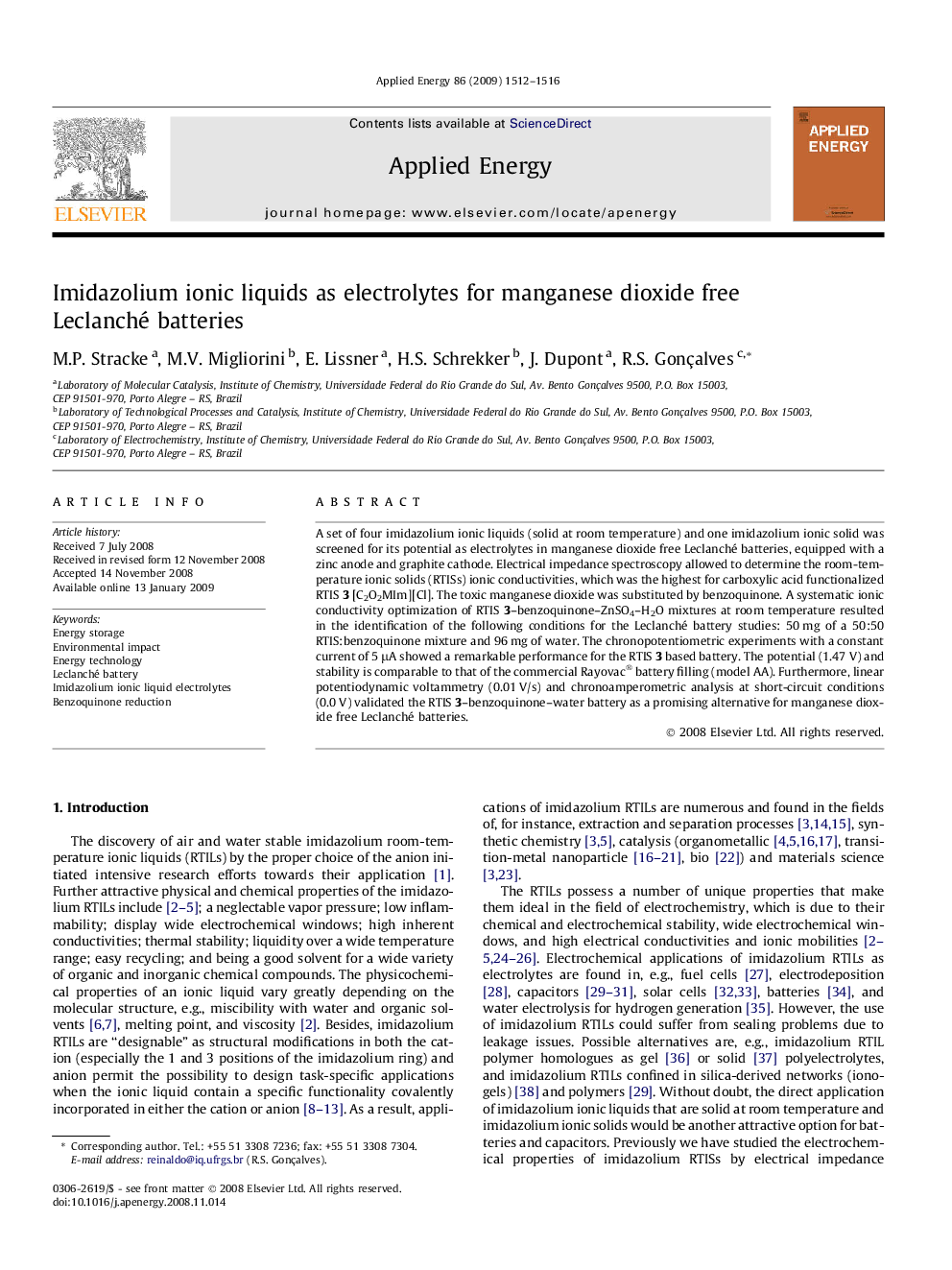| Article ID | Journal | Published Year | Pages | File Type |
|---|---|---|---|---|
| 244928 | Applied Energy | 2009 | 5 Pages |
A set of four imidazolium ionic liquids (solid at room temperature) and one imidazolium ionic solid was screened for its potential as electrolytes in manganese dioxide free Leclanché batteries, equipped with a zinc anode and graphite cathode. Electrical impedance spectroscopy allowed to determine the room-temperature ionic solids (RTISs) ionic conductivities, which was the highest for carboxylic acid functionalized RTIS 3 [C2O2MIm][Cl]. The toxic manganese dioxide was substituted by benzoquinone. A systematic ionic conductivity optimization of RTIS 3–benzoquinone–ZnSO4–H2O mixtures at room temperature resulted in the identification of the following conditions for the Leclanché battery studies: 50 mg of a 50:50 RTIS:benzoquinone mixture and 96 mg of water. The chronopotentiometric experiments with a constant current of 5 μA showed a remarkable performance for the RTIS 3 based battery. The potential (1.47 V) and stability is comparable to that of the commercial Rayovac® battery filling (model AA). Furthermore, linear potentiodynamic voltammetry (0.01 V/s) and chronoamperometric analysis at short-circuit conditions (0.0 V) validated the RTIS 3–benzoquinone–water battery as a promising alternative for manganese dioxide free Leclanché batteries.
